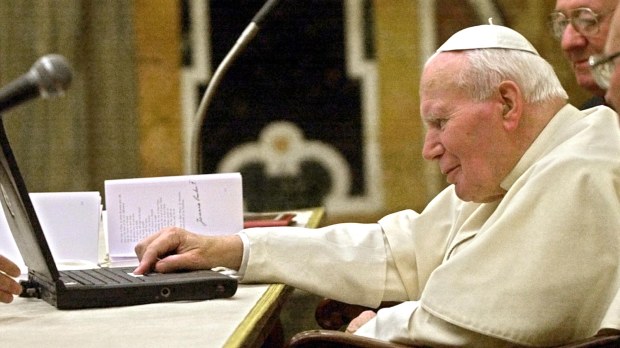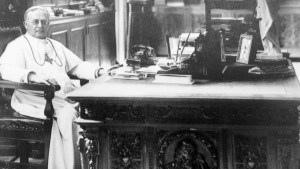Lenten Campaign 2025
This content is free of charge, as are all our articles.
Support us with a donation that is tax-deductible and enable us to continue to reach millions of readers.
The Vatican has been online for almost three decades. It was back in 1995 when Archbishop John Patrick Foley asked Franciscan Sister Judith Zoebelein to create an official website for the Holy See. Foley, who was a member of the Pontifical Council for Social Communications, had already registered the .va domain suffix for the exclusive use of the Holy See. Even though the internet was still in its infancy, searches including the word “Vatican” were already leading to websites that had nothing to do with the Holy See. By keeping the suffix .va for the exclusive use of the Vatican, Foley wanted to assure internet users any website using it was indeed official and, thus, trustworthy.
Since Christmas 1995, the Vatican website has provided online access to the Vatican Museums, the Vatican Library, the Catechism, all papal documents, and plenty of resources on Church history, art, theology, and so forth. The site, which receives (literally) millions of visits per day,is housed on three main servers, named after the three biblical archangels —Michael, Raphael, and Gabriel. Since the Greek word “angel” literally translates as “messenger,” giving their names to these servers seemed quite appropriate.
As soon as the website was up, an email address was set for Pope John Paul II: john_paul_ii@vatican.va. He actually had six email boxes, filtered by language. Pretty soon all servers were flooded with emails written by people wanting to correspond with him, and although these inboxes were never actually checked by the pope himself, emailed messages were printed out and sent to the Apostolic Palace to be shown to the Holy Father on special occasions.
John Paul II was nevertheless the first pope to use email. As a determined supporter not only of the Vatican website but of the internet as a whole, he even sent an apostolic letter to the bishops of Australia and New Zealand, in November 2001, shortly after the Synod of Bishops regarding the Church in Oceania. Instead of simply sending the letter by regular mail (as had been customary until then) the then 81-year-old pontiff sent the document instantly, via email.
In his last apostolic letter, called The Rapid Development, published in 2005, John Paul II wrote:
New technologies, in particular, create further opportunities for communication understood as a service to the pastoral government and organization of the different tasks of the Christian community. One clear example today is how the Internet not only provides resources for more information, but habituates persons to interactive communication … Do not be afraid of new technologies! These rank among the marvelous things — inter mirifica — which God has placed at our disposal to discover, to use and to make known the truth, also the truth about our dignity and about our destiny as his children, heirs of his eternal kingdom.
Make sure to view the slideshow below to discover seven of the most insightful phrases coined by John Paul II.



